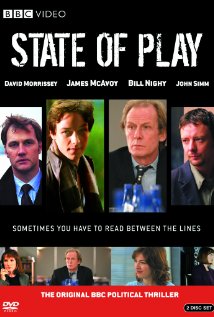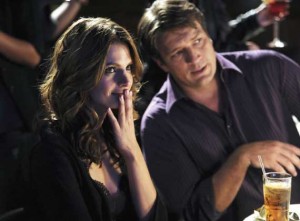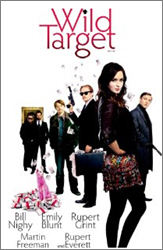 My husband and I were thoroughly engrossed by the five-part BBC miniseries version of State of Play that we watched this weekend. (Disclaimer: I thought I’d picked up the Hollywood-movie version, and will be watching it next weekend.)
My husband and I were thoroughly engrossed by the five-part BBC miniseries version of State of Play that we watched this weekend. (Disclaimer: I thought I’d picked up the Hollywood-movie version, and will be watching it next weekend.)
But getting back to the BBC miniseries…
This is an excellent example of how to tell a story. The writers ease you into the story, letting you get to know the characters and come to care for them while gradually turning up the heat. And then there’s the matter of “the stakes.” Initially, the stakes are low – the reporters want a story. But as the story progresses, the stakes also increase from personal challenges to serious physical jeopardy. And then, just at the point where you’re beginning to wonder how long they can sustain the original threat, they raise the stakes yet again, in much the same way that a musician might change key. But even then, the movie isn’t overloaded with action sequences and fluffy filler. Instead, the scriptwritrs gave us a real treat: characters who actually talk to each other – crisp, real dialogue, that keeps you glued to your seat for the duration of the series.
I think it’s the dialogue that is actually my favorite part of the entire show. When the characters are talking to each other, you actually believe the conversations – they don’t come off as scripted or artificial, the way so many other movie conversations feel.
And there’s one scene, where Ann (in the foreground) is finally letting herself react to the day’s events, while Cal (in the background) is talking just like a normal person would, that is a brilliant piece of both dialogue and cinematography.
If you’re tired of the usual roller-coaster action-adventure ride, that leaves you breathless but wondering what the big deal was, give State of Play a chance. The storytellers – and the creative team that produced the film – really knew how to tell a story.


